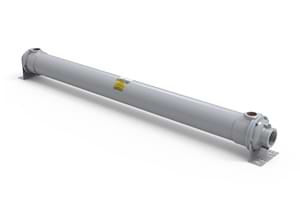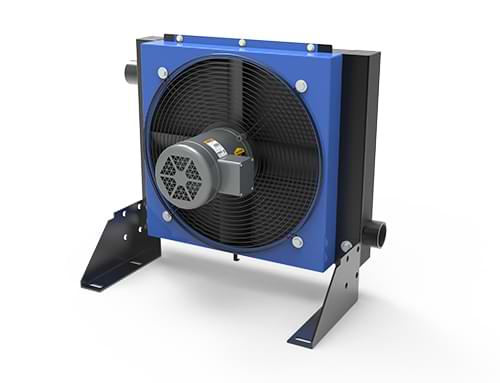Aftercoolers for the Textiles and Printing Industries
Essentially, an aftercooler is a heat exchanger that cools down compressed air after it leaves the compressor. Why does that matter? Well, in both textile manufacturing and printing, compressed air is a workhorse—powering machinery, drying materials, and even cleaning equipment. Hot, moist air straight from a compressor can mess with production quality or damage gear, so aftercoolers step in to chill things out and pull out excess moisture.
Applications
- Textile Dyeing: Cooled air prevents steam or moisture from messing with dye consistency, especially in air-jet systems.
- Fabric Cleaning: Blow-off applications use dry air to remove lint or debris without leaving wet spots.
- Printing Presses: Aftercoolers ensure air used for ink drying doesn’t overheat rollers or blur fine details.
Water Cooled Aftercoolers
Compressor Cooling
- Fixed or Removable Tube Bundles
- Material Options Available
- Standard and Custom Options

Air Cooled Aftercoolers
Compressor Cooling
- Use Ambient Air to Cool
- Variety of Motor Options
- Standard Pressures of Up To 250 psi

The Benefits of Aftercoolers for Textile and Printing Applications
In the textile world, air compressors are everywhere. They drive looms, spin yarn, and handle fabric finishing processes. But if the air’s too warm or damp, you’re looking at issues like warped threads or uneven dyeing. An aftercooler keeps that air cool and dry, which is a game-changer for quality control. Take a cotton mill, for instance. After the yarn’s spun, it often goes through an air-jet weaving process. A good aftercooler ensures the air blasting through the loom doesn’t leave behind condensation that could snag the fabric or gum up the works.
Printing’s a similar story. Whether it’s screen printing on fabric or high-speed digital printing on paper, compressed air is used to dry ink fast and keep things moving. Hot, humid air can smudge prints or slow down drying times, and nobody’s got time for that in a busy shop. Aftercoolers help maintain crisp, clean output by delivering air that’s just right.
For example, picture a large-scale textile plant in India—say, one churning out saris. They might pair an oil-free compressor with an industrial aftercooler to keep their air-jet looms humming. Or think of a commercial printer in the U.S. running a Heidelberg press; an aftercooler keeps the air drying those glossy magazine pages from turning into a humid mess. In both cases, it’s about efficiency and protecting the end product. Aftercoolers aren’t flashy, but they’re the kind of behind-the-scenes tech that keeps the wheels turning.


